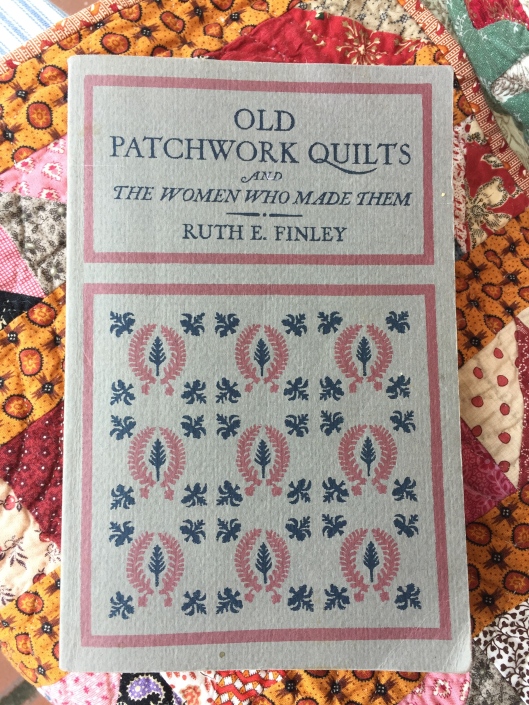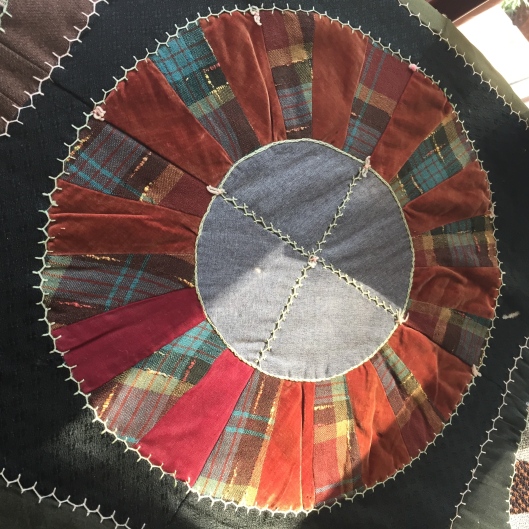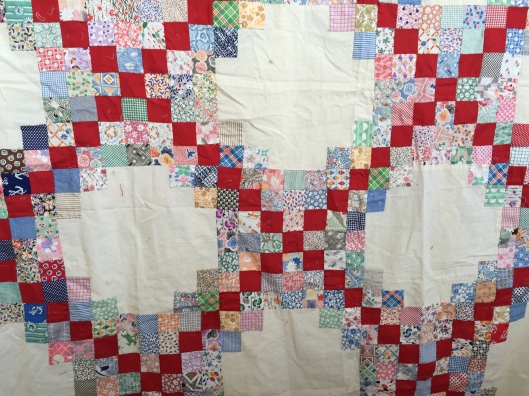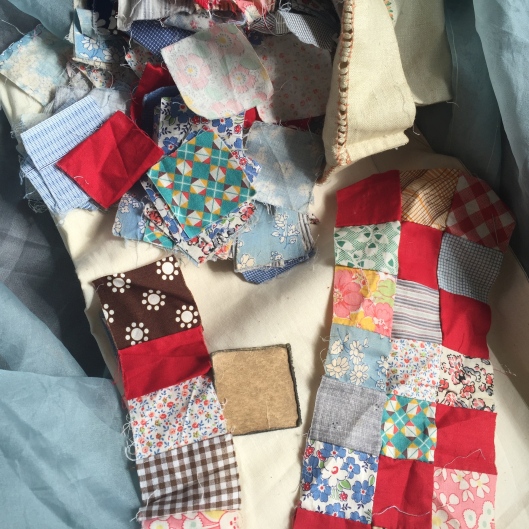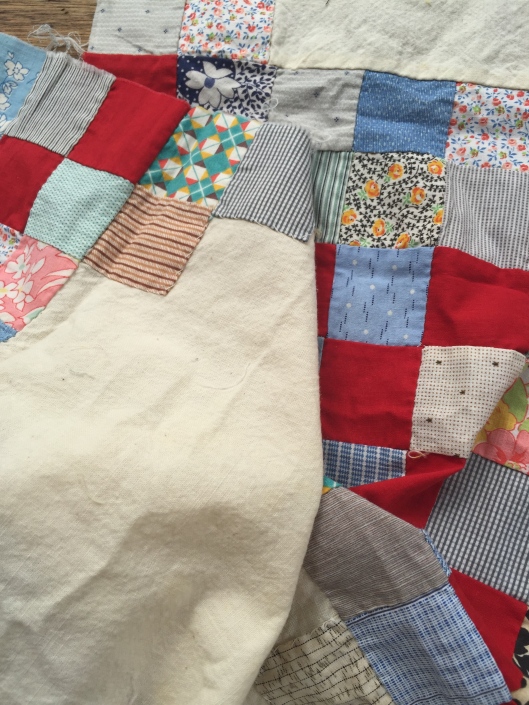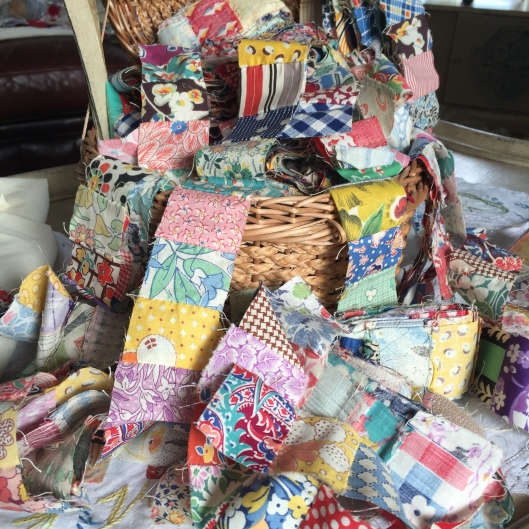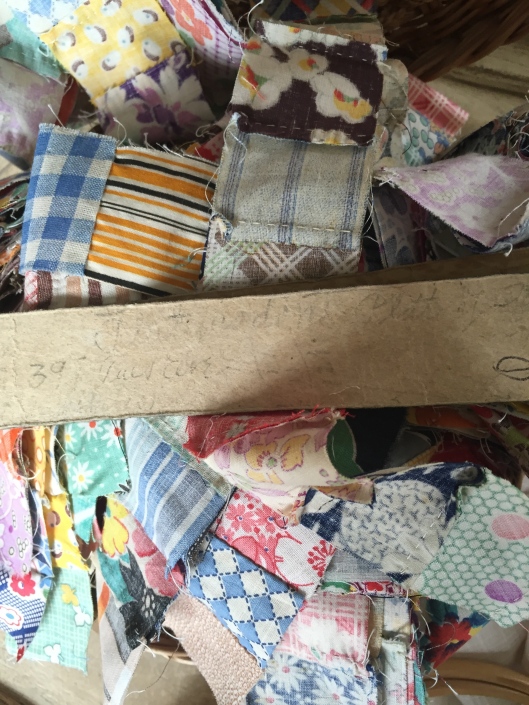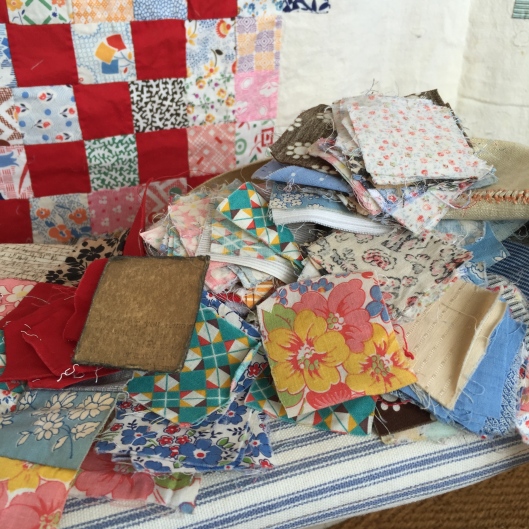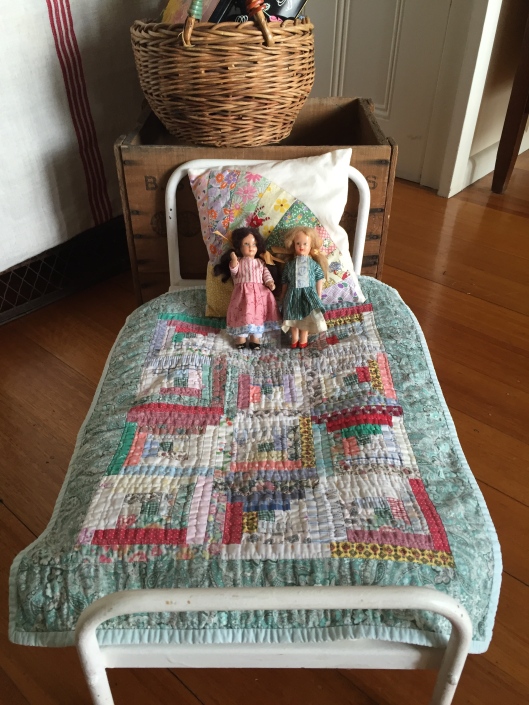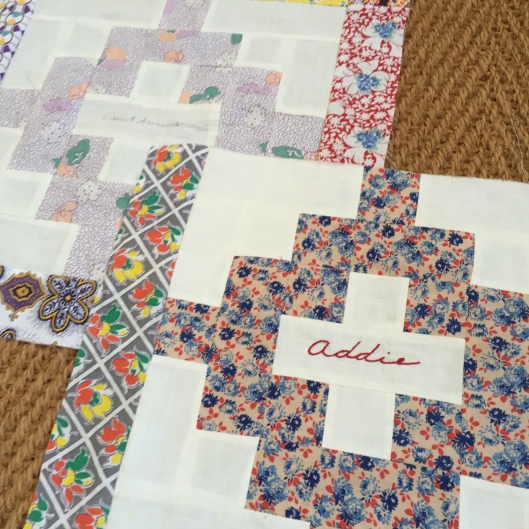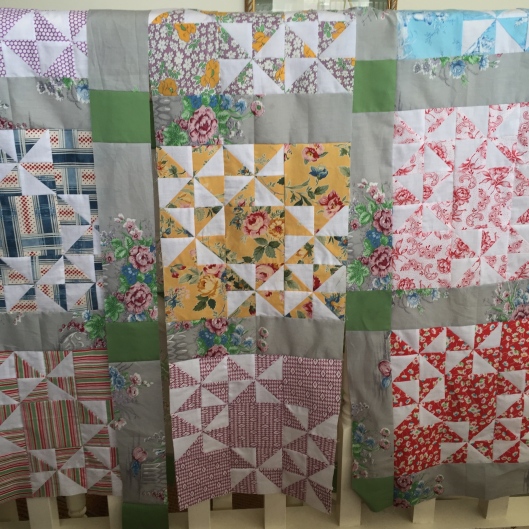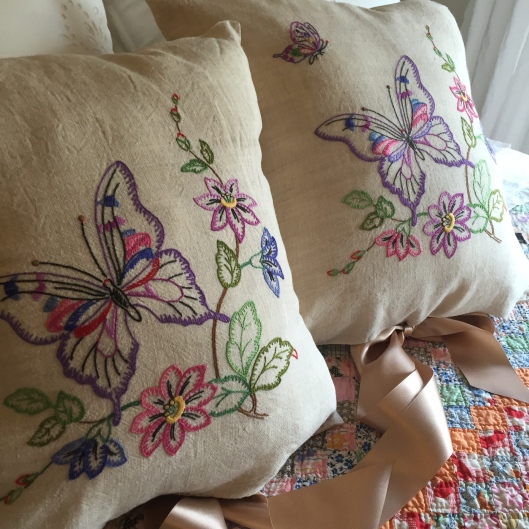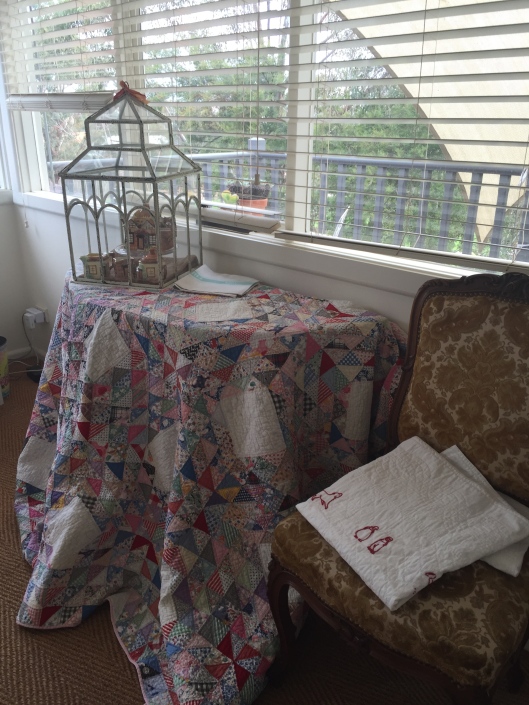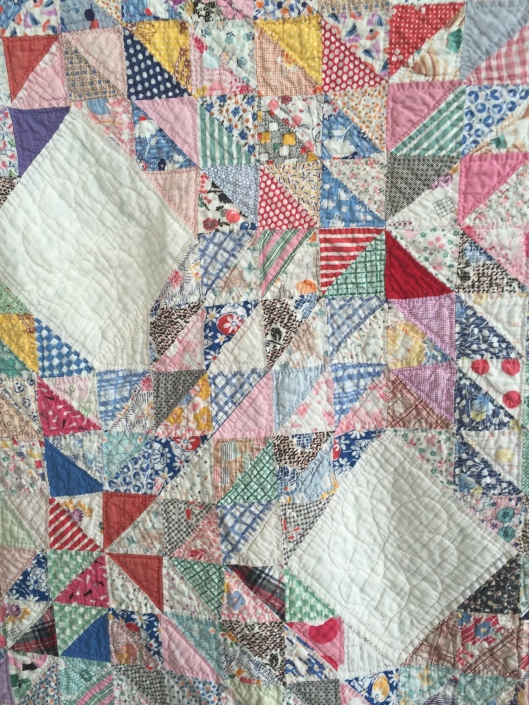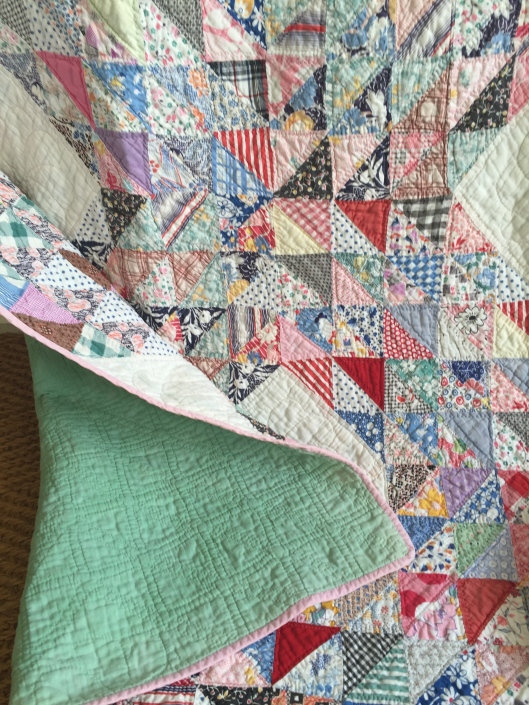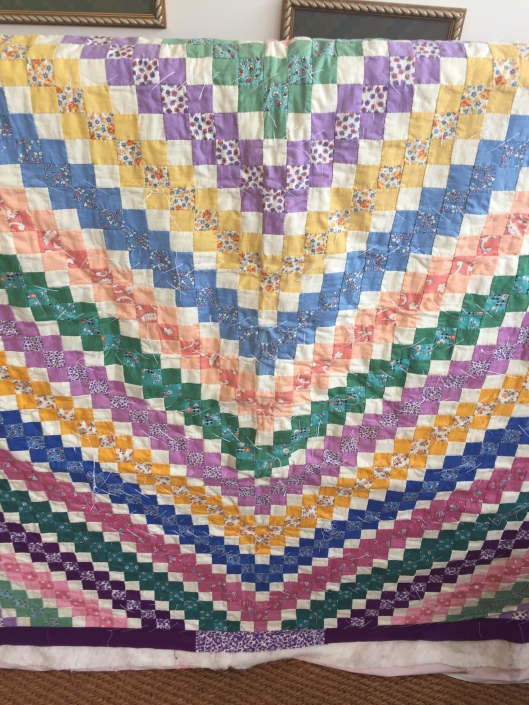
Hexagon Quilt circa 1970s
Prior to the influence of the revival of quilting in the 1970s quilts would predominately have been made using dressmaking cottons and the scraps remaining from home sewing. The majority of these quilts would have been Hexagon quilts stitched over paper or simple shapes machined stitched together.
I attempted a hexagon quilt in 1973 having found a pattern in an English Womens’ Weekly magazine. I used scraps from dressmaking and fabric cut off from shortening hems of bought clothes. The Mini skirt being the fashion of the time. This piece remains unfinished but it is interesting for the fabrics it contains.
Hexagon Quilt Top
This hexagon quilt top contains myriad fabrics obviously saved from dressmaking. The fabrics were probably saved over a number of years. The maker fussy cut many of her fabrics to create a wonderful time capsule of the fabrics used by modern dressmakers. 


Fussy Cutting
The quilt was stitched over papers and the papers still remain on the outside edges. The papers have been cut from recycled paper. Wrappers from many household items can be seen such as loose tea wrappers, cigarette wrappers, labels from cans and letters and note paper.

Papers still in place
This quilt was found in an op shop in country Victoria but unfortunately no other information is known. I am happy to leave this quilt unfinished as a document of the times.
Hexagon Coverlet

This coverlet contains a great collection of dressmaking fabrics including some brushed interlock. The pieced section has been hand stitched to a new cotton sheet. Fortunately the maker left the label on the sheet which states Made in Australia. The maker positioned a row of hexagons to sit over the pillows when the coverlet is placed on a bed. 

Detail of hexagons
One Patch Coverlet

This patchwork coverlet is pieced of squares in two sizes. Small squares measuring 7 cm are centred between larger squares measuring 14 cm.
The fabrics are cottons in plains, florals and a good selection of seersuckers. The border is a buttery yellow cesarine and is applied to the front, folded to the back and top stitched through all layers. The corners are neatly mitred.

Pretty scraps
The quilt was made in country Queensland. It measures 87 cm by 160 cm and may have been made for a small single bed. There is no batting and the backing is an open weave cotton. Very neatly made and so pretty.
Little Cot Quilt

I purchased this cot quilt at an antique market and all the seller knew about it was that it came from Mildura, Victoria. It is a simple quilt made of randomly pieced squares stitched in rows of 6 by 6. Fabrics are typical of the 60s with plains, checks, florals and a juvenile print. The pieced binding serves as a narrow border on both sides of the quilt. The backing is a very nice floral that appears to be an older fabric.

Pretty backing fabric
The quilt is not quilted but does have an inner layer of an open weave cotton.
These pieces of patchwork are not remarkable in their execution, style or design but they are special because of the time and place of their making. They are very special to me and I admire the women who made them.
Thank you for visiting and Happy Quilting.

 Patchwork Strippy Quilt
Patchwork Strippy Quilt Quilt Restoration – A Practical Guide by Camille Dalphond Cagnac
Quilt Restoration – A Practical Guide by Camille Dalphond Cagnac



 Turned patches
Turned patches Pinned and ready to appliqué
Pinned and ready to appliqué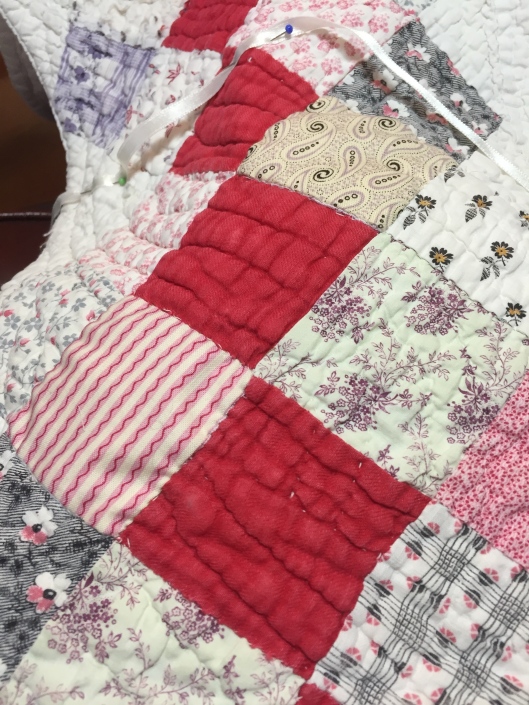 Stitched in place.
Stitched in place. Seventy-Two Lost Ship Blocks are set diagonally with a red and black print to create this stunning quilt. The blocks are pieced using a different fabric design in each block. These fabrics are complimented with a lovely cream and brown design.
Seventy-Two Lost Ship Blocks are set diagonally with a red and black print to create this stunning quilt. The blocks are pieced using a different fabric design in each block. These fabrics are complimented with a lovely cream and brown design.




